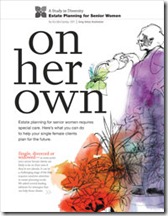 I learned last week that almost half of the people over age 65 in America are single. Simply put, wow! While getting older has its benefits (if you don’t think so, you need to read this column more often), traveling the journey without a partner can be challenging or at least require some careful planning. Being single these days comes in all shapes and sizes—never-married, separated, divorced or widowed— and with varied living arrangements—living alone or with a partner, friends, children, grandchildren or relatives. Here are a few interesting facts about single seniors. The number of single seniors living alone is on the rise, up 17 percent since 1970. Almost one-third of all seniors age 65 and older are widowed. The median age of widowhood is 58 years. Certainly marriage does not guarantee any of us an easier ride as we age, but a marital partner may afford us another income, another option for health insurance or even a built-in caregiver. A spouse may be the yin to our...
I learned last week that almost half of the people over age 65 in America are single. Simply put, wow! While getting older has its benefits (if you don’t think so, you need to read this column more often), traveling the journey without a partner can be challenging or at least require some careful planning. Being single these days comes in all shapes and sizes—never-married, separated, divorced or widowed— and with varied living arrangements—living alone or with a partner, friends, children, grandchildren or relatives. Here are a few interesting facts about single seniors. The number of single seniors living alone is on the rise, up 17 percent since 1970. Almost one-third of all seniors age 65 and older are widowed. The median age of widowhood is 58 years. Certainly marriage does not guarantee any of us an easier ride as we age, but a marital partner may afford us another income, another option for health insurance or even a built-in caregiver. A spouse may be the yin to our...